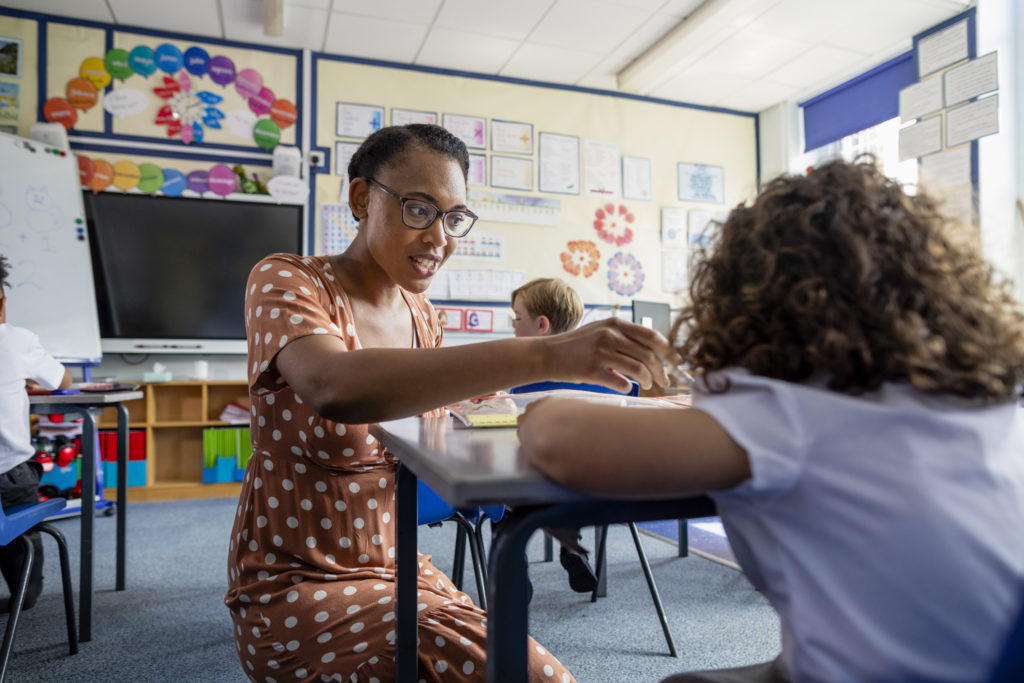Fall is definitely in the air. For me, this time of year means a few things: cooler temperatures, red and orange trees, and pumpkin-spiced treats.
In school, this time of year also means digging deeper into the curriculum.
As a teacher, supporting your students in their educational pursuits takes effort and planning. One strategy that can be helpful here is the use of regular, structured check-ins.
A structured check-in
- builds trust
- informs thinking
- transforms learning
Below are three surprising ways that having structured check-ins will help you cultivate a more student-centered classroom.
#1 — You’ll build deeper relationships with your students.
When I taught high school English, I would often check in with students when they were working on group assignments.
I can remember a handful of times when I seemed to drop into a conversation at the exact right moment to learn something revelatory about a student’s personal interests, worldview, or academic understanding.
I relished those moments, but I have to admit: most of the time, they seemed to happen by chance. This made me wonder:
What if these moments happened not by chance but by design?
Regular, structured check-ins build trust and deepen our relationships. By planning more frequent check-ins, teachers can intentionally and more consistently provide a space for students.
With this approach, those important moments of connection don’t just happen in the “extra” moments of class but are actually baked into your routine.
Having a structure for these check-ins helps. You might try giving students a template of questions to select and prepare, increasing the odds that they’ll share relevant, important information with you.
#2 — Your instructional design will naturally become more student-centered.
There’s a saying I’ve been thinking about recently: “design nothing for us, without us.”
This phrase reminds me of what it means to create student-centered learning experiences. The only tried-and-true way to design for students is to design with students.
One of my favorite assessment strategies — staggered due dates for longer assignments — came to fruition when a student made a comment about being stressed out with the amount of work due in one day. This comment sparked a class discussion which led me to implement this practice.
My students loved staggered due dates, and I know it’s because they were at the center of its design.
All students have thoughts, challenges, and knowledge that can transform your classroom practice. They just might not know how or when to share them.
Using structured check-ins can unlock these ideas and facilitate conversations like the one that inspired me.
Gathering this student feedback, in turn, will allow you to design or redesign learning to support all of your students.
See also: Why are schools making learning student-centered?
#3 — You’ll boost student autonomy.
In my classes, I always found that there were a few students who just naturally felt a sense of ownership of their learning without any support or guidance from me.
These students came to class on the very first day with a list of questions, ready to talk to me about their strengths and weaknesses, and excited to formulate a game plan for their growth over the course of the year.
Of course, these proactive students were not in the majority, and that makes sense.
Most of my students walked into my classroom feeling like school was something that was being “done” to them — that they had no real control and that their main objective was just to do as well as they could on assignments.
They were great students. They just didn’t feel any sense of autonomy.
Check-ins are what helped me encourage autonomy in all of my students.
Giving students questions to prepare and guide each check-in actively encourages them to take ownership of their learning. It allows them to look for evidence in their work or to reflect on what support might look like.
Inviting students to sit alongside you for a more prepared conversation gives them the ability and the time to make sense of their progress. It shows them that their learning has a purpose and that there is power in their knowledge and competency.
Try it in your classroom with this free template!
If you’re wondering how you can help students prepare for check-ins and have the best conversations possible, you’re in the right place. Our free template provides a step-by-step guide to help you build a structured check-in that will work for your classroom. Fill out the form below, and you’ll receive a copy of this template sent to your email address!
*By filling out this form, you agree to receive email communications from Michigan Virtual. If at any time, you no longer wish to receive these emails, you may unsubscribe.

